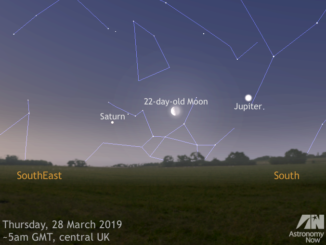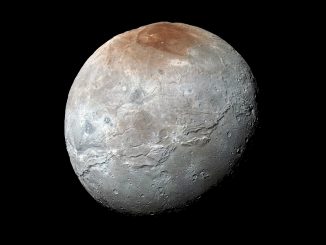
Here, the giant impact basin Odysseus on Saturn’s moon Tethys stands out brightly from the rest of the illuminated icy crescent. This distinct colouration may result from differences in either the composition or structure of the terrain exposed by the giant impact. Odysseus (280 miles, or 450 kilometres, across) is one of the largest impact craters on Saturn’s icy moons, and may have significantly altered the geologic history of Tethys.
Tethys’ dark side (at right) is faintly illuminated by reflected light from Saturn.
Images taken using ultraviolet, green and infrared spectral filters were combined to create this colour view. North on Tethys (660 miles or 1,062 kilometres across) is up in this view.
The view was acquired on 9 May 2015 at a distance of approximately 186,000 miles (300,000 kilometres) from Tethys. Image scale is 1.1 mile (1.8 kilometres) per pixel.



